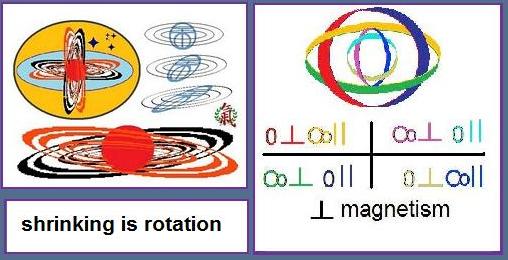
Early Galaxy Creation and Is String Theory Dead?
There is more than one article discussing things near the first two billion years of the universe- Is it not clear as well that the quason of a creative quasic field of a galaxy, a thing an analog between our scale of the first Big Bang Ylem and the black holes at the center of galaxies could be the case and not the preoccupation with just real and virtual dust alone? Maybe the quasions are 100% opaque matter. In any case, like the Haaj the spiraling galaxy goes around the dark cube and inside sparsely in the entropy the star that fell as an object of worship. Physics really needs to take a higher view and find deeper meaning- in all of its methods and equations.
Brightest Galaxies Tend to Cluster in Busiest Parts of Universe, Study Finds
http://www.sciencedaily.com/releases/2010/05/100520141240.htm
* * *
From
http://www.philosophychatforum.com/whatsnew.php
At last I find another statement from Lincoln (Fermi Lab) provoking of theory although I wonder why he wastes time on some of the posters. Congratulations to him for his Book now in Polish- I have learned a few interesting things from him as one can find from reading in his book certain passages of what we should all know about physics, and the state of the art of our colliders and their value.
Today, which from a philosophic view I found rather interesting. Especially the concept that
"quarks may be 100% matter (mass?)... the foundations here certainly beg explanation- maybe some sort of "phantom energy" rendering the protons dark and independent of reversible formuli and thus immortal in this universe anyway. Of course they would not arise like the steady state model's creation field (of Hoyle). Or did they so arise if we think of dust and space in the distant past, at least once early on? In any case are we not to the old Buddhist argument that such an entity could not be subdivided not knowing where each of them would touch? So, have we showed the preons a a false concept for some base of our univese as pure matter and not ultimately energy if we must have a bootstrapping on this level of self-creation? A good formula in a way is itself only as good as its structure or design of operations and at the deepest foundational levels. Can there not as some have interpreted be a nucleus in the nucleus- or perhaps deeper strings in some sort of hieracy of selected generations? Merely adding dark energy or mass ad hoc is not addressing the structure of space and physics of the vacuum in a way that can better unify our theories.
Re: Is string theory dead?
by xris on October 11th, 2010, 5:24 am
Energy holds energy together? So when do we differentiate between the two. Quarks I believe are 2% matter, are they held together by the remaining 98% energy. They are considered as matter but are not matter. If gravity is present when energy is present why is gravity dependant on mass? If mass attracts mass why is gravity not part of the attractive force that binds energy together? Would matter form from energy if gravity was not present? Water has no power till gravity gives it life, why not gravity giving energy the required momentum to form matter? Till we truly understand gravity I don't think its full effects can be fully understood.
If the formula E=M is effected by gravity, why is it not part of that formula?
Re: Is string theory dead?
by Lincoln on October 11th, 2010, 10:33 am
Quarks may be 100% matter. (Personally I doubt that, but that's informed speculation rather than fact.) protons and neutrons are 2% matter and 98% energy.
Gravity is present when energy is present. Gravity is also present when matter is present, because matter is very concentrated energy. Lots of energy = lots of gravity.
Mass or energy attracts other mass or energy through the warping of space.
Matter would form from energy with or without gravity. However, once the energy is there, it will distort space and, consequently, cause gravity.
Gravity cannot give the momentum (I'm not sure how that word applies here) to forming matter because it is a very weak force. Or, more correctly, it could pull matter together, but it doesn't cause it to bind as well as other, stronger, forces.
The formula E = M is a special case of the more generalized formula. This is the equation for mass at rest. If we add motion (specifically, momentum or p,) we should use the more correct equation E2 = m2 + p2. In the limit of p = 0, we get the familiar E = mc2 (or E = m in the choice of c = 1 units) equation.
We can then add potential energy, which doesn't exist in this simpler formula. It's just like the old (not relativistic) equation of [Total Energy] = [Kinetic] + [Potential].
All equations have meanings. It is critical to learn the conditions under which they apply. Otherwise, you will draw (and have drawn) inaccurate conclusions.
* * *
From a geometric view my use of the Kaabe as a metaphore of such physics, a geometric object which is not just a point or string object. And that they are absteract in a reverse sense the creativity implied by such a cube cosmically is everywhere, many instead of one bang, even on the human as well as the particle level- again, what distinguishes the real from the virtually abstract here? What is mass?


No comments:
Post a Comment